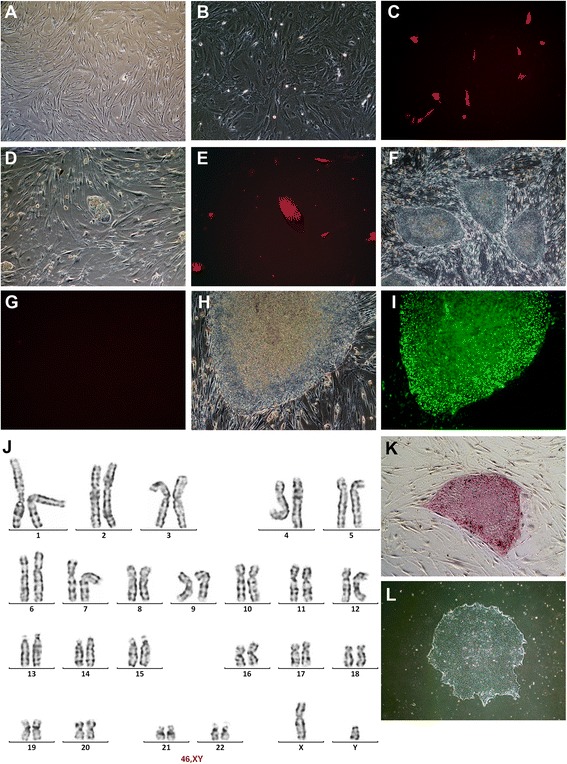Fig. 1.

The generation of human iPS cell from hMSC. hMSC isolated from healthy donor at 2nd passage had spindle-shape (a). hMSCs after transduced with polycistronic OSKM-dTomato lentivirus for 48 h was observed under a light microscope (b) and visualized for the staining of dTomato under a fluorescent microscope (c). Five days after the transduction, the transduced cells transformed to epithelial-like morphology forming clusters of dTomato-positive cells on day 7 (d, e). The cell colonies expanded and became tightly packed (f). The exogenous expression of OSKM were silenced and confirmed by negative dTomato (g). After achieving fully reprogramming, the stable colonies were observed (h) and expressed pluripotent surface marker TRA-1-60 (i). The iPS colonies were analyzed for karyotype (j). The colony was positive for alkaline phosphatase activity (k) and maintained in feeder-free condition (l)
